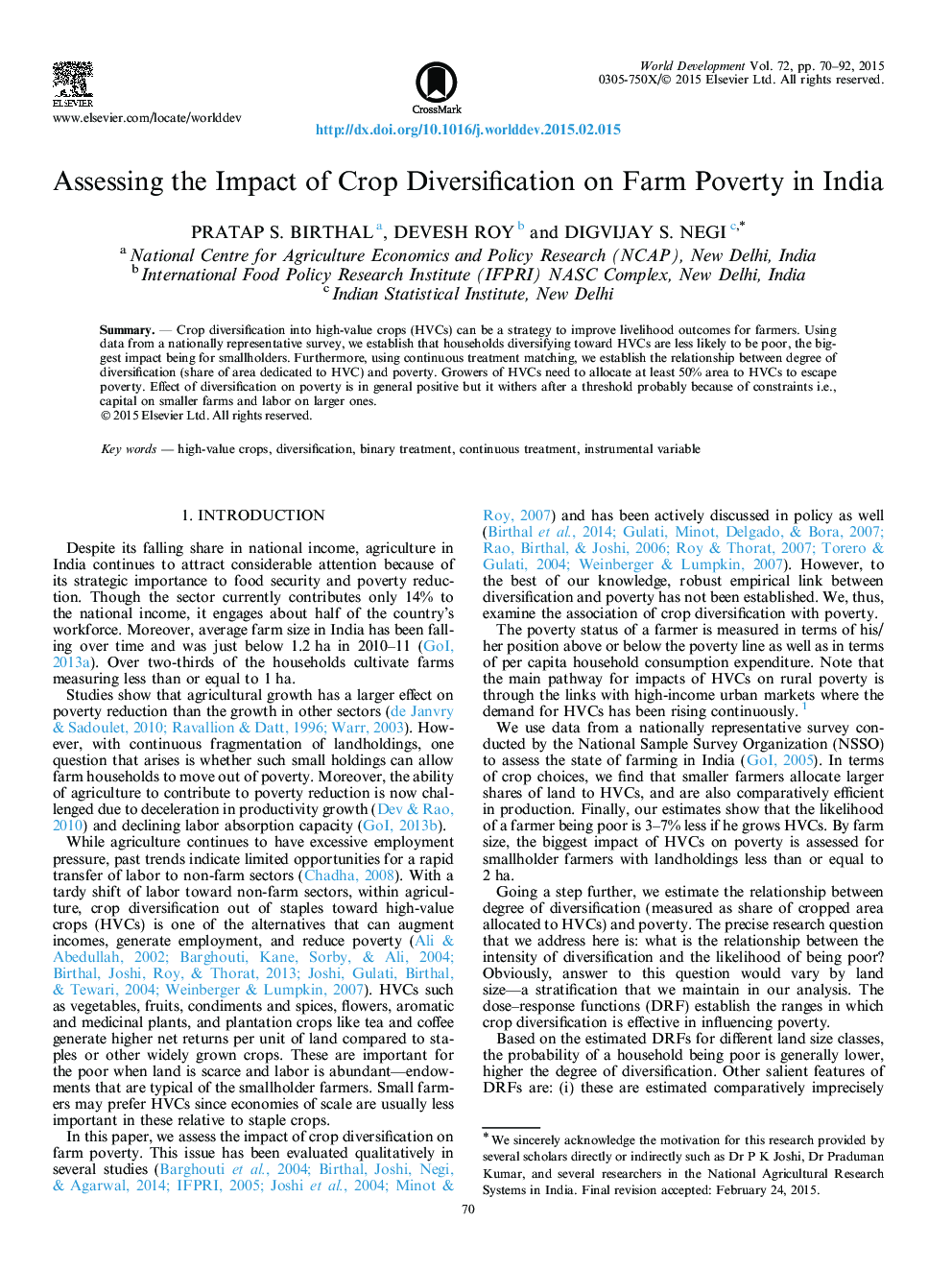| Article ID | Journal | Published Year | Pages | File Type |
|---|---|---|---|---|
| 7393706 | World Development | 2015 | 23 Pages |
Abstract
Crop diversification into high-value crops (HVCs) can be a strategy to improve livelihood outcomes for farmers. Using data from a nationally representative survey, we establish that households diversifying toward HVCs are less likely to be poor, the biggest impact being for smallholders. Furthermore, using continuous treatment matching, we establish the relationship between degree of diversification (share of area dedicated to HVC) and poverty. Growers of HVCs need to allocate at least 50% area to HVCs to escape poverty. Effect of diversification on poverty is in general positive but it withers after a threshold probably because of constraints i.e., capital on smaller farms and labor on larger ones.
Related Topics
Social Sciences and Humanities
Economics, Econometrics and Finance
Economics and Econometrics
Authors
Pratap S. Birthal, Devesh Roy, Digvijay S. Negi,
